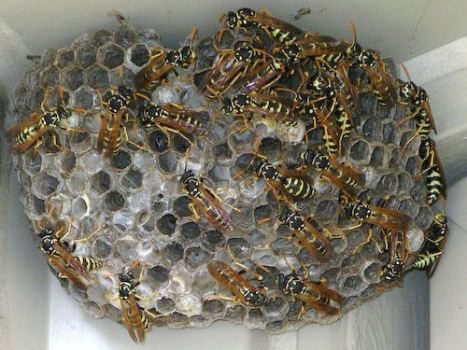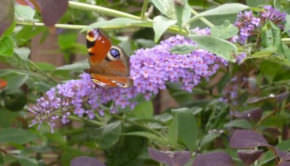Insect of the Month: The Common Wasp
Insect of the Month – The Common Wasp There are around 250 species of wasp in the UK most are solitary but along with a six others the common wasp is a social insect forming colonies of 5,000 – 10,000 individuals. The wasp’s year starts in the spring when the fertilised queens from the previous year come out of hibernation. Once a suitable nest site is found; a disused animal burrow or a cavity in a tree or building the queen will start stripping wood which she chews, shreds and mixes with saliva to make a paste. She uses this to construct the first cells in the nest laying an egg in each one. She must feed the larvae, look after the nest and extend it until there are enough fully grown female workers to take on these jobs at which point she devotes her time solely to laying approximately 100 eggs a day. The workers have mandibles which are like crab claws. They use these to catch insect prey which they dissect, chew to a pulp and feed to the larvae. In return the larvae produce nutritional syrup for the workers. The larvae grow rapidly weaving a web across the top of their cell when they are ready to pupate and emerging as adults a few weeks later. In late summer the nest produces drones (males) and new queens which leave the nest to mate. This is synchronised so all wasp nests do it at the same time. This is essential as they mate with wasps from other nests, not their own, ensuring that the genetic variation is maintained. After this the males die while the new queens hibernate. The old queen and workers die of starvation as there are no larvae producing syrup for them and less food sources. By winter the nest is deserted and will not be used again. AGAINST WASPS: In spring workers will attack and carry off foraging worker bees while later in the year they will take honey and carry off bee grubs and pupae. They are a nuisance anywhere where food is being cooked especially in the autumn when their food is in short supply and they become intoxicated on fermenting fruit. FOR WASPS: They are an important insect- controlling predator feeding flies, aphids, caterpillars and other invertebrates to their larvae. Their nests provide a home for some of our most beautiful, pollinating hoverflies. They are important pollinators themselves. Did You Know? • When a wasp stings or is killed the ‘smell’ of its venom (which is like a distress signal) causes other wasps nearby to become more aggressive. • Most hibernating queens die over the winter not due to the cold but predation by other insects such as spiders. Warm winters are also not good news as they emerge too early and starve due to lack of food. • Wasps are attracted to bright colours but they cannot see red. • Research indicates that wasps use odour to identify and attack rival wasps from other colonies. • There exists a strong caste system in wasp colonies and a lot of biting and forcefulness is used to maintain this. • Whether a larva develops into a queen or a worker depends to some extent on the type and amount of food it receives.


